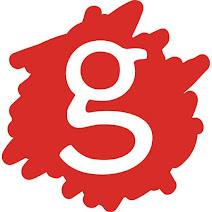 |
| Alix Martinez Photography |
My First Time as a Hybrid Author
In 2000, I traded a nine-year banking career for car seats, leaky diapers, and perpetual sleep deprivation. Over the past fourteen years, I have carved out time between carpooling, laundry and life to chase my secret dream of authoring a historical novel. Researching vineyard life in nineteenth-century France and America challenged me. Learning to write energized me, and empowered me to create an imaginary world—my respite from the joyful, but selfless job of raising three kids.
After seven revisions, I was finally ready to pitch The Vintner’s Daughter. Twenty-three agents considered it—all rejected it. The novel was “too literary,” or “too commercial.” There was “too much winemaking,” or “not enough corset-wearing.” Hmmm. Really?
Plucking every doubt from my mind, and replacing it with the image of my finished novel, became a daily ritual. I would publish this book, even if I had to completely overhaul the manuscript. I just didn’t know how I would publish it.
Then, in January 2013, author Holly Payne (whom I’d just met at the Writer’s Digest Conference the prior year) introduced me to an agent friend who was searching for women’s book club fiction. Within a day of reading my manuscript, April Eberhardt offered me representation. I laughed, I cried, but above all, I felt validated. Three months later, when HarperCollins Canada offered me a two-book deal, I experienced my Tom-Cruise-jumping-on-Oprah’s-couch moment (only I was bouncing on the lumpy leather club chair in my office).
We were off to the races! My agent continued to query U.S. publishers with gusto, and although many enjoyed the story, no one snapped it up. By December 2013, when HarperCollins Canada announced they were going to publish The Vintner’s Daughter in June 2014—ahead of schedule—I was elated. Then reality hit: we had no U.S. publisher, and we were running out of time.
My impatience kicked into high gear. I’d spent the last six months of my life painstakingly editing my manuscript under the guidance of HarperCollins Canada’s crackerjack editorial team, they’d already designed a gorgeous cover, and there was no way on God’s green earth that I was NOT going to publish in the U.S. this summer.
I asked my agent about She Writes Press, a partnership press in Berkeley. I belonged to their 23,000-member online writing community, and had heard about their recent successes. Luckily, April knew the publisher well. She pitched my book to Brooke Warner, requested a summer publication date, and we signed.
Signed on for what, you ask? Excellent question. I drive a hybrid—I didn’t necessarily want to be one. Yet, this new publishing model appealed to me. She Writes is a curated press: they only publish projects of high literary quality. I would still publish independently, but alongside an industry-savvy partner.
So how does the partner-publishing model work? In my case, I paid an upfront fee (hear me out, I’m an ex-banker, so I did the math) in return for more control over my project, a greater percentage of the profits, and the marketing and distribution of my book by Ingram Publisher Services to libraries, indie booksellers, Amazon, Barnes & Noble, etc. In addition, half of the fee was used to purchase licensing rights for the Canadian cover and text design, which my U.S. publisher negotiated on my behalf.
What will the long-term benefits of this partnership be? Time will tell, but there have been many short-term gains. My involvement in every aspect of proofing, printing and promoting my book has made me bolder. In recent months, I’ve secured Dutch and Hungarian deals with the help of my foreign rights agent. I’ve even struck up a conversation with a voice actor, which led to a U.S. deal with Blackstone Audio to produce the audio book version of The Vintner’s Daughter this November.
I’ve concluded there’s no right or wrong way to publish—only the way that pleases you and offers the highest quality book to your readership. But for now, I remain, happily, a hybrid.














No comments:
Post a Comment